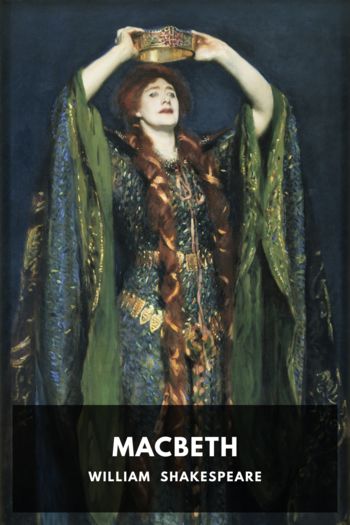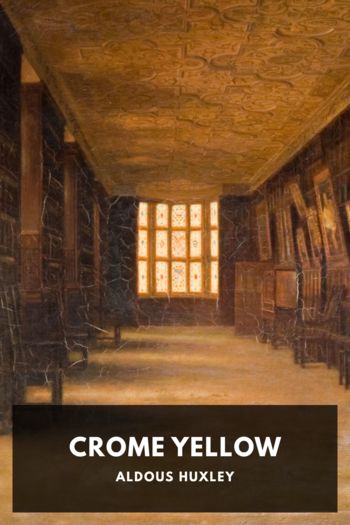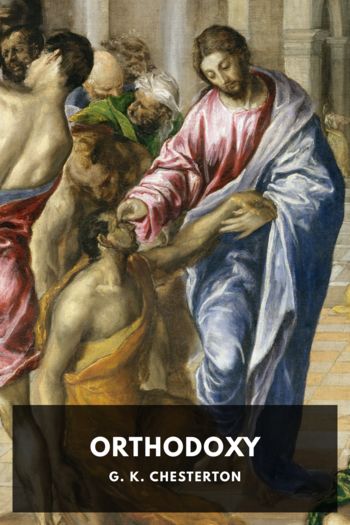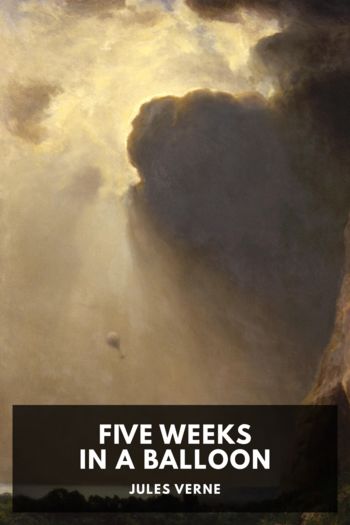Genre Other. Page - 280

Description
King Duncan’s closest generals, Macbeth and Banquo, have just defeated two invading armies and the Irish rebel Macdonwald. Out across the misty moor, they encounter three witches who reveal to Macbeth a powerful prophecy: “All hail, Macbeth! hail to thee, thane of Glamis! All hail, Macbeth, hail to thee, thane of Cawdor! All hail, Macbeth, thou shalt be king hereafter!” They not only claim that Macbeth will eventually become King of Scotland, but that Banquo will father a line of Scottish kings—though ominously, Banquo will never be king himself.
This shocking tragedy—a violent caution to those seeking power for its own sake—is, to this day, one of Shakespeare’s most popular and influential masterpieces.
This Standard Ebooks production is based on William George Clark and William Aldis Wright’s 1887 Victoria edition, which is taken from the Globe edition.

Description
The Age of Reason is an important work in the American Deist movement. Paine worked on it continually for more than a decade, publishing it in three parts from 1794 through 1807. It quickly became a best-seller in post-Revolution America, spurring a revival in Deism as an alternative to the prevailing Christian influence.
In clear, simple, and often funny language, Paine attempts to dissect the Bible’s supposed inaccuracies and hypocrisies. He portrays the Bible as a human construct, full of illogic, errors, and internal inconsistencies, as opposed to it being a text born of divine inspiration. On those arguments he pivots to decrying not just Christianity, but organized religion as a whole, as a human invention created to terrorize and enslave. Instead of accepting organized religion, he states that “his mind is his own church” and that man must embrace reason.
While these arguments weren’t new to the wealthy and educated class of the era, they were new to the poor masses. The book was at first distributed as cheap unbound pamphlets, making it easily accessible to the poor; and Paine’s simple language was written in way the poor could understand and sympathize with. This made the powerful very nervous, and, fearing that the book could cause a potential revolution, Paine and his publishers were suppressed.
Paine wrote The Age of Reason while living in Paris. In France, its thesis wasn’t revolutionary enough for the bloodthirsty Jacobins; he was imprisoned there for ten months and only escaped execution through a stroke of luck. Meanwhile in Britain, the government considered the pamphlets seditious. British booksellers and publishers involved in printing and distributing the pamphlets were repeatedly tried for seditious and blasphemous libel, with some even receiving sentences of hard labor.
Paine began writing Part III after escaping France for America, but even the American elite thought the book too scandalous, with Thomas Jefferson—himself a Deist—advising Paine not to publish. Paine listened to Jefferson’s advice and held off publishing Part III for five years before publishing extracts as separate pamphlets. For that reason, Part III is not a concrete publication, but rather an arrangement of several loosely-related pamphlets organized at the discretion of an edition’s editor.
Once it was in the hands of Americans, it sparked a revival in Deism in the United States before being viciously attacked from all sides. Paine earned a reputation as an agitator and blasphemer that stuck to him for the rest of his life.
Despite The Age of Reason’s harsh reception—or perhaps, because of it, and the controversy and discussion it caused—it achieved a popularity in England, France, and America that gave it incredible influence in those nation’s perspectives on organized religion.

Description
In the mid 1700s, around the age of eleven, Olaudah Equiano and his sister were kidnapped from their village in equatorial Africa and sold to slavers. Within a year he was aboard a European slave ship on his way to the Caribbean. The Interesting Narrative of the Life of Olaudah Equiano, or Gustavus Vassa, the African was published by the author in 1789 and is part adventure story, part treatise on the corrupting power of slavery, and part tract about the transformative powers of Christianity.
Equiano’s story takes him from Africa to the Americas, back across the Atlantic to England, into the Mediterranean, and even north to the ice packs, on a mission to discover the North-East passage. He fights the French in the Seven Year’s War, is a mate and merchant in the West Indies, and eventually becomes a freedman based in London.
The Interesting Narrative of the Life of Olaudah Equiano was one of the first popular slave narratives and was reprinted eight times in the author’s lifetime. While modern scholars value this account as an important source on the life of the eighteenth-century slave and the transition from slavery to freedom, it remains an important literary work in its own right. As a valuable part of the African and African-American canons, it is still frequently taught in both English and History university courses.

Description
Denis, a young writer and poet, travels to an English countryside manor to spend the summer alongside a cast of outlandish leisure class intellectuals. The younger guests of the manor grapple with navigating love and sex within a post-Victorian society. Older guests and inhabitants obsess over trivialities from their vast libraries, eager to give a show of their knowledge to each other. The novel uses these interactions to paint a scathing representation of their insecurities and world views.
Crome Yellow is Aldous Huxley’s first published novel. His inspiration for many of the characters came from his time spent at Garsington Manor, a haven for many writers and poets of the time.

Description
The Autobiography of Mark Twain is a collection of reminiscences and reflections. Twain began dictating them in 1870, and in 1906 he published Chapters from My Autobiography in twenty-five installments in the North American Review. He continued to write stories for his autobiography, most of which weren’t published in his lifetime due to a lack of access to his papers, or their private subject matters. After Twain’s death, numerous editors have tried to organize this collection of published and unpublished autobiographical works, producing various differing editions. The most recent attempt is by the Mark Twain Project at the University of California, Berkeley, which published a three-volume edition; but, through what many consider legal trickery, the University of California, Berkeley has claimed copyright on that edition until 2047—137 years after Twain’s death.
This Standard Ebooks production is based on Harper and Brothers’ 1924 collection, compiled by Albert Bigelow Paine.

Description
While perhaps best known for his novels War and Peace and Anna Karenina, the Russian author and religious thinker Leo Tolstoy was also a prolific author of short fiction. This Standard Ebooks production compiles all of Tolstoy’s short stories and novellas written from 1852 up to his death, arranged in order of their original publication.
The stories in this collection vary enormously in size and scope, from short, page-length fables composed for the education of schoolchildren, to full novellas like “Family Happiness.” Readers who are familiar with Tolstoy’s life and religious experiences—as detailed, for example, in his spiritual memoir A Confession—may be able to trace the events of Tolstoy’s life through the changing subjects of these stories. Some early stories, like “The Raid” and the “Sevastopol” sketches, draw from Tolstoy’s experiences in the Caucasian War and the Crimean War when he served in the Imperial Russian Army, while other early stories like “Recollections of a Scorer” and “Two Hussars” reflect Tolstoy’s personal struggle with gambling addiction.
Later stories in the collection, written during and after Tolstoy’s 1870s conversion to Christian anarcho-pacifism (a spiritual and religious philosophy described in detail in his treatise The Kingdom of God is Within You), frequently reflect either Tolstoy’s own experiences in spiritual struggle (e.g. “The Death of Ivan Ilyitch”) or his interpretation of the New Testament (e.g. “The Forged Coupon”), or both. Many later stories, like “Three Questions” and “How Much Land Does a Man Need?” are explicitly didactic in nature and are addressed to a popular audience to promote his religious ideals and views on social and economic justice.

Description
The American Crisis is a collection of articles by Thomas Paine, originally published from December 1776 to December 1783, that focus on rallying Americans during the worst years of the Revolutionary War. Paine used his deistic beliefs to galvanize the revolutionaries, for example by claiming that the British are trying to assume the powers of God and that God would support the American colonists. These articles were so influential that others began to adopt some of their more stirring phrases, catapulting them into the cultural consciousness; for example, the opening line of the first Crisis, which reads “These are the times that try men’s souls.”

Description
Thomas Paine wrote the first part of The Rights of Man in 1791 as a response to the furious attack on the French Revolution by the British parliamentarian Edmund Burke in his pamphlet Reflections on the Revolution in France, published the previous year. Paine carefully dissects and counters Burke’s arguments and provides a more accurate description of the events surrounding the revolution of 1789. He then reproduces and comments on the “Declaration of the Rights of Man and of Citizens” promulgated by the National Assembly of France.
The manuscript of The Rights of Man was placed with the publisher Joseph Johnson, but that publisher was threatened with legal action by the British Government. Paine then gave the work to another publisher, J. S. Jordan, and on the advice of William Blake, Paine went to France to be out of the way of possible arrest in Britain. The Rights of Man was published in March 1791, and was an immediate success with the British public, selling nearly a million copies.
A second part of the book, subtitled “Combining Principle and Practice,” was published in February 1792. It puts forward practical proposals for the establishment of republican government in countries like Britain.
The Rights of Man had a major impact, leading to the establishment of a number of reform societies. After the publication of the second part of the book, Paine and his publisher were charged with seditious libel, and Paine was eventually forced to leave Britain and flee to France. Today The Rights of Man is considered a classic of political writing and philosophy.

Description
Orthodoxy is G. K. Chesterton’s response to his critics’ assertion that his earlier collection of essays, Heretics, had “merely criticised current philosophies without offering any alternative philosophy.” In his intellectual journey from pagan to agnostic to positivist philosopher, he had attempted to build a philosophy “some ten minutes in advance of the truth.” But when he compared his modern philosophy with Christian theology, he realized that he was “the man who with the utmost daring discovered what had been discovered before.” Thus, Orthodoxy is a work of Christian apologetics, where Chesterton tries to show that Christianity is a universal answer to the everyday needs of humanity, and not just an arbitrary philosophy handed down from on high.

Description
Five Weeks in a Balloon tells the tale of three Englishmen who attempt to cross Africa, from east to west, in a balloon. Dr. Ferguson is the rational scientist leading the trio, accompanied by loyal sidekick Joe and the doctor’s sporting friend Kennedy.
The three embark on many adventures: They encounter natives and dangerous animals, experience problems with their ballooning technology, and struggle with the winds and the weather. Throughout the novel, the author liberally sprinkles descriptions of flora, fauna, and geography, as seen through nineteenth century eyes.
Though this is Verne’s first published book, he already demonstrates much of the formula that drive his later works: the well-defined characters led by a rational scientist, the focus on science and technology, and of course the adventure-filled plot.
The novel, first published in 1863, was topical for its time, as European interest in African exploration was strong. At the time the book was published, David Livingstone was midst-exploration in south-east Africa, and Burton and Speke had recently returned from exploring the Great Lakes region. The novel itself contains many references to actual expeditions that would have been current or recent for the original readers of the novel.